Highlights of Pompeii Guided Walking Tour
With over 2.5 million visitors annually, Pompeii stands as one of the most visited archaeological sites in the world. Stepping onto its ancient streets, one can’t help but be captivated by the stories hidden within its ruins.
However, it’s not just the sheer number of visitors that make Pompeii a must-see destination. The highlights of a guided walking tour through this ancient city offer a unique perspective on its history and daily life. From the grandeur of the Basilica to the intriguing Lupanare brothel, each site holds a piece of Pompeii’s vibrant past, waiting to be uncovered.
Key Points

- Explore Pompeii’s Basilica and Forum for insights into legal and social life.
- Admire the House of Menander’s lavish frescoes depicting Roman mythology.
- Experience Roman entertainment at the Teatro Grande, known for its acoustics.
- Discover the cultural norms and history of Pompeii at the scandalous Lupanare.
Basilica
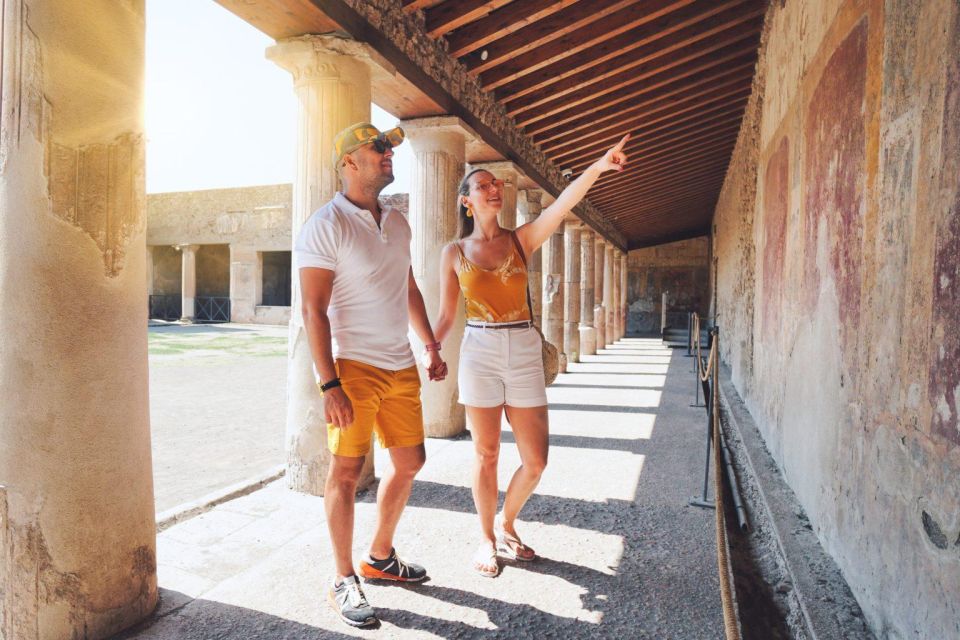
Nestled within the ancient ruins of Pompeii, the Basilica stands as a testament to the bustling commercial and legal activities that once thrived within its walls. The architectural design of the Basilica showcases intricate columns and a spacious central hall, reflecting the grandeur of Roman architecture.
This structure held immense historical significance as it served as a judicial and business center where legal matters were settled, contracts were drawn, and commercial transactions took place. The Basilica’s strategic location in the heart of the city made it a focal point for social interactions and legal proceedings.
Visitors today can marvel at the well-preserved remnants of this ancient building, gaining insight into the daily lives and activities of Pompeii’s inhabitants.
Foro Di Pompei
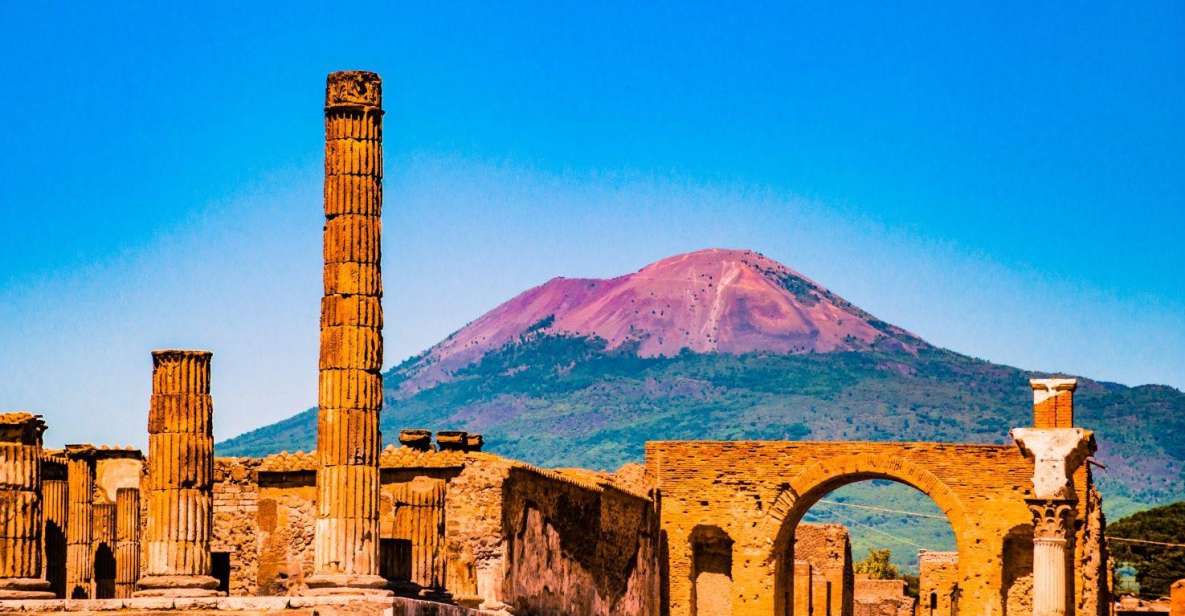
The Basilica’s proximity to the Foro di Pompei, the political and social heart of the ancient city, illuminates the interconnectedness of commerce and governance in Pompeii’s vibrant society. The Forum was a bustling hub where political dynamics shaped the city’s destiny. It wasn’t just a marketplace but a place for public gatherings, elections, and legal matters.
Citizens engaged in social interactions, exchanging goods, ideas, and forging alliances. The architecture surrounding the Forum, like the Temple of Jupiter and the Comitium, reflected the power structures within Pompeii. Visitors can envision the lively debates, the trading of goods, and the overall pulse of daily life that once animated this central square.
The Forum stands as a testament to the civic life of Pompeii, where political and social spheres intertwined seamlessly.
House of Menander

Tucked away amidst the ancient ruins of Pompeii, visitors can uncover the House of Menander, a treasure trove of luxurious frescoes and historical significance waiting to be explored.
This ancient Roman villa, named after the playwright Menander, boasts some of the most exquisite and well-preserved frescoes in Pompeii. The walls are adorned with vibrant colors and intricate designs that offer a glimpse into the opulent lifestyle of the elite during that era.
As visitors wander through the rooms of the House of Menander, they can marvel at these luxurious frescoes that depict various scenes from Roman mythology and daily life. Plus, the villa contains a collection of Roman artifacts that further enhance the understanding of this ancient civilization.
Teatro Grande
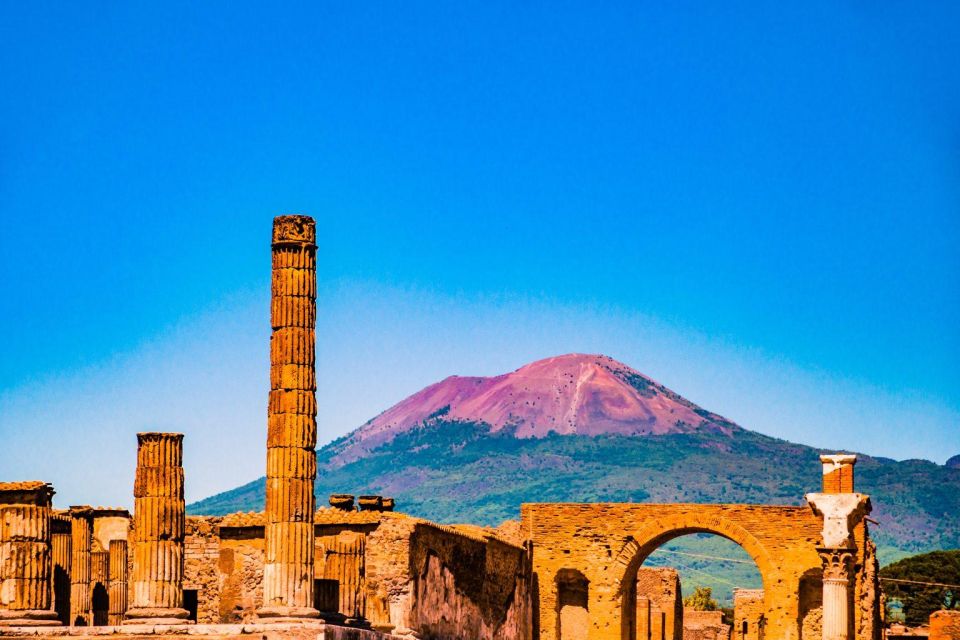
Amidst the ancient city of Pompeii stands the Teatro Grande, a grand amphitheater that once echoed with the sounds of Roman entertainment and cultural gatherings. This historical site holds immense significance in showcasing the vibrancy of Roman entertainment and the importance of communal spaces in ancient society. The Teatro Grande was a central hub for theatrical performances, gladiatorial contests, and public assemblies, providing insight into the daily lives of Pompeii’s inhabitants. Its architectural design allowed for excellent acoustics, ensuring that every spectator could hear the performances clearly. This amphitheater stands as a testament to the rich cultural heritage of Pompeii and offers visitors a glimpse into the past glory of Roman entertainment.
| Teatro Grande Highlights | ||
|---|---|---|
| Roman Entertainment | Historical Significance | Cultural Gatherings |
Lupanare Di Pompei
Exuding an aura of historical intrigue, the Lupanare Di Pompei beckons visitors to explore its scandalous yet captivating past through its well-preserved walls and intriguing artifacts. The brothel’s history reveals insights into ancient Roman social norms and practices, offering a glimpse into a different aspect of daily life in Pompeii.
Erotic art adorning the walls provides a unique perspective on the society’s acceptance and celebration of sensuality. Visitors can witness firsthand the layout of the rooms and the explicit nature of the paintings, shedding light on the cultural attitudes towards sexuality in that era.
- Historical Insights: Discover the fascinating history of the Lupanare and its role in Pompeian society.
- Erotic Art: Explore the explicit and artistic depictions of sensuality found within the brothel.
- Cultural Norms: Gain a deeper understanding of Roman attitudes towards sexuality and pleasure.
Granaries of the Forum
The Granaries of the Forum in Pompeii served as vital storage facilities for the bustling city’s food supply, playing a crucial role in sustaining the daily life of its inhabitants. These granaries were essential for storing grain, a staple food source for the people of Pompeii.
The strategic location of the granaries near the Forum allowed for easy access to distribute food to the city’s population. In Pompeii, agricultural practices were highly advanced, contributing to the success of the granaries in ensuring a steady food supply.
The efficient storage and distribution of grain in these granaries were crucial in supporting the thriving city and its residents, showcasing the importance of urban planning and food management in ancient Pompeii.
Via Dell’abbondanza
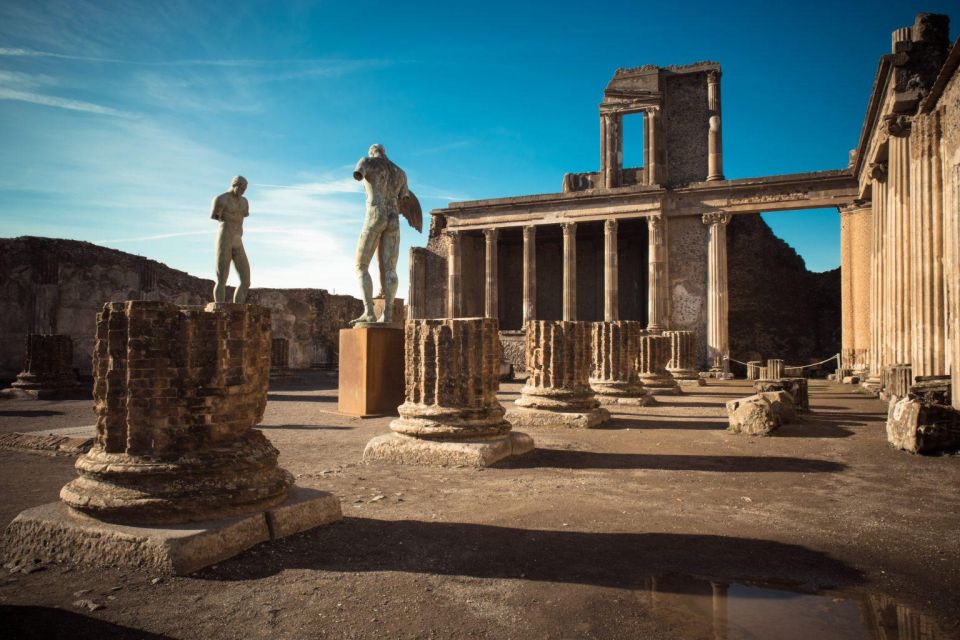
Down Via dell’Abbondanza in Pompeii, visitors are transported back in time as they walk along one of the ancient city’s main streets lined with well-preserved storefronts and residential buildings. This bustling thoroughfare offers a glimpse into daily life in Pompeii before the catastrophic eruption of Mount Vesuvius.
-
Exploring Shops: Visitors can peer into ancient shops that once bustled with activity, imagining the vibrant marketplace atmosphere.
-
Ancient Marketplace: The street’s layout and the remnants of shops and stalls provide a vivid picture of the commercial hub this street once was.
-
Residential Buildings: Alongside the shops, well-preserved homes give insight into the lives of Pompeii’s residents, showcasing their living spaces and daily routines.
Foro Civile Di Pompei
Walking further along Via dell’Abbondanza, visitors reach the fascinating Foro Civile Di Pompei, a central square that served as a vital civic and social space in the ancient city. The Foro Civile was the heart of Pompeii’s political structure, where important decisions were made, and legal matters were addressed. It was also a bustling hub of social life, where citizens gathered to socialize, conduct business, and attend public events. Here’s a glimpse of what the Foro Civile Di Pompei offered:
| Aspects | Description | Importance |
|---|---|---|
| Political Structure | Center for decision-making and law | Vital for governance |
| Social Life | Gathering place for citizens | Important for community |
| Architectural Style | Columns, temples, public buildings | Reflects city’s values |
Common questions
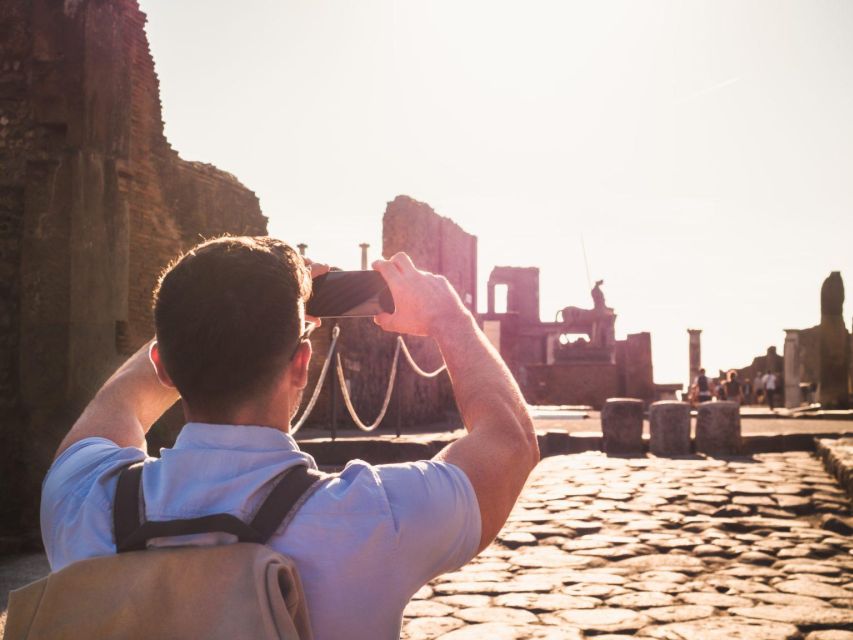
Are There Any Restrictions on Photography During the Tour?
Photography restrictions are common on guided tours to respect historical sites and protect artifacts. Following tour etiquette, guests should adhere to guidelines set by the tour guide. It ensures the preservation and integrity of the site.
Is There a Dress Code for Visiting Pompeii Archaeological Park?
When visiting Pompeii Archaeological Park, there isn’t a strict dress code, but comfortable attire and sturdy shoes are recommended due to the uneven terrain. Consider the weather for appropriate clothing, as it can get hot.
Are There Restroom Facilities Available Along the Tour Route?
Restroom availability is limited along the tour route. Visitors should plan accordingly based on the 2-hour duration. It’s recommended to use facilities before starting the tour. However, the guide may provide information about nearby restrooms during the visit if needed.
Is There a Gift Shop or Souvenir Store at the Pompeii Archaeological Park?
Yes, there is a gift shop and souvenir store at the Pompeii Archaeological Park. Visitors can purchase unique mementos and souvenirs to remember their experience exploring the ancient ruins. It offers a variety of historical and cultural items.
Are There Any Recommended Nearby Restaurants or Cafes for After the Tour?
After the tour, visitors can enjoy delicious local cuisine at nearby restaurants like Ristorante Vesuvio or L’Antica Pizzeria da Michele for traditional Italian dishes. For post-tour drinks, Bar Sirena offers a cozy atmosphere.
Last Words
Experience the ancient wonders of Pompeii come to life on a guided walking tour, where you can explore iconic sites like the Basilica, Foro di Pompei, House of Menander, and more.
With a professional local guide leading the way, learn about the rich history and culture of this fascinating city frozen in time.
Don’t miss the chance to uncover the secrets of Pompeii with this convenient and informative tour.